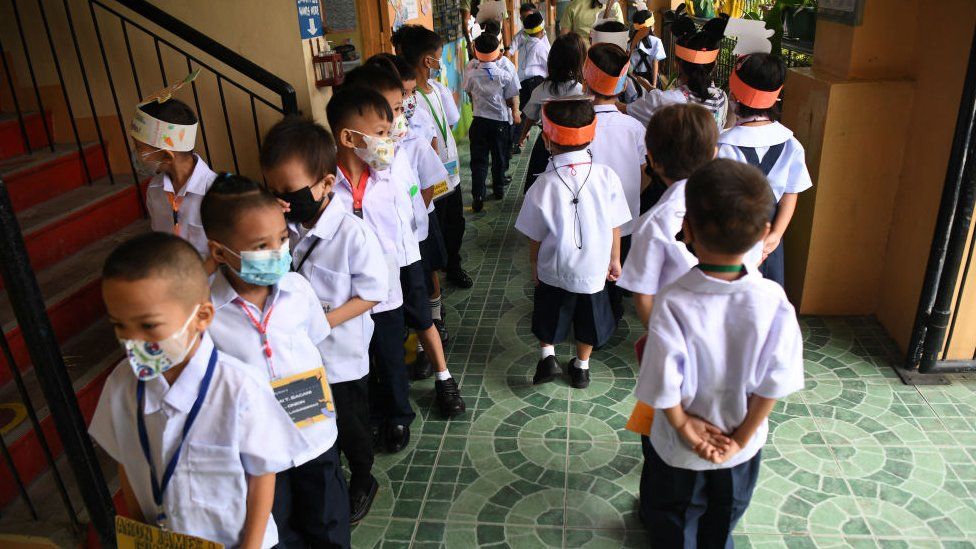ARTICLE AD BOX
By Zubaidah Abdul Jalil
BBC News
 Image source, Getty Images
Image source, Getty Images
Almost half the country's schools resumed in-person classes after more than two years of distance learning
Millions of students across the Philippines have returned to the classroom on Monday, after one of the world's longest school closures.
Almost half the country's schools resumed in-person classes after more than two years of distance learning.
The Philippines was one of the last few countries to transition back to face-to-face learning after Covid struck.
But some experts say the prolonged suspension of in-person lessons has worsened an education crisis.
Around 24,000 of the country's public schools - or just less than half - will implement five days of face-to-face classes.
The rest will hold a mix of in-person and online classes, education officials say, at least until November, when all 27 million registered students are expected to head back to the classroom full-time.
Some schools will have to split classes up in shifts because of classroom shortages and to avoid overcrowding, due to fears that schools could turn into new virus hotspots, said the Department of Education.
The protracted school closures have been attributed to fears of the virus spreading rapidly in a country where it is common for schoolchildren to be living with parents and elderly grandparents.
In-person classes were replaced with online classes, printed materials and lessons broadcast on television and social media.
The Philippines saw one of the worst Covid-19 outbreaks in South East Asia, with close to three million cases and around 50,000 deaths.
On Monday, at San Pedro Elementary School in Manila, sixth-grade student Sophia Macahilig said she was "excited" to meet her classmates and teachers after two years of Zoom lessons.
"We used to have fun and now I can have fun again," the 11-year-old told news agency AFP.
Meanwhile, other children dressed in uniforms and wearing masks lined up to receive a dollop of hand sanitizer and undergo a temperature check before being admitted into the school premises.
But there are lingering concerns about the effects online learning have had on children's educational development the last two and a half years, especially when students were already struggling to meet basic literacy standards pre-pandemic.
Nine out of 10 Filipino children could "not read a simple text with comprehension" by age 10 before the pandemic, said a World Bank study last year.
"Prolonged school closures, poor health risk mitigation, and household-income shocks had the biggest impact on learning poverty," said organisation UNICEF in a statement.

 2 years ago
28
2 years ago
28








 English (US)
English (US)